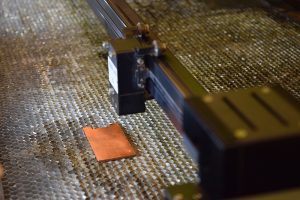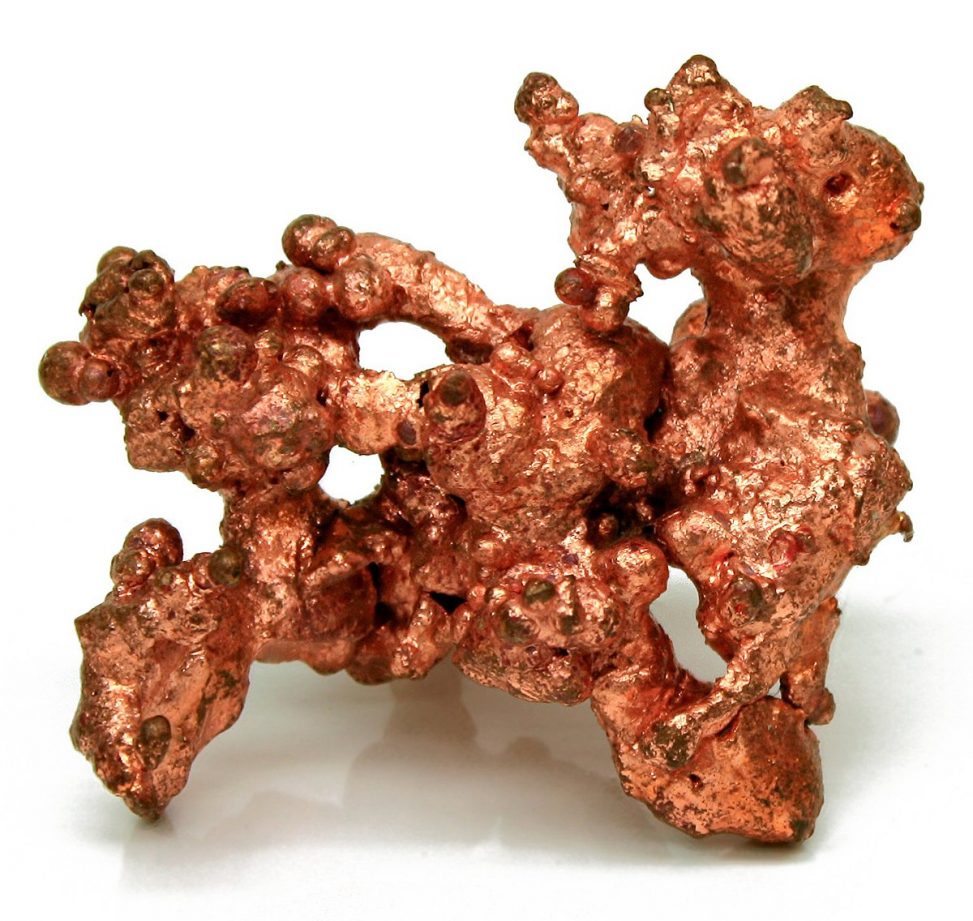Researchers at Purdue University recently investigated antibiotic resistance of bacterial strains. Antibiotics are intended to kill bacteria that cause infections in humans. Unfortunately, in today’s society, there is an issue with improper use and overuse of antibiotics. Improper use and overuse have caused bacterial strains to develop resistance to antibiotics. In other words, the antibiotics are no longer effective in killing the bacteria. Can you see how this could be a major problem? Scientists and medical professionals are in desperate need of an alternate solution to ridding the body of bacteria attributed illnesses. Fortunately, there is a plausible solution and it involves none other than common metals.
Previous research has suggested that copper and silver are able to effectively inactive different bacterial microbes via direct contact. In fact, copper is the first metal registered with an antimicrobial property. How cool is that? As with anything in the world of science, researchers continued to brainstorm ways to enhance the antimicrobial power of copper. One idea consisted on creating copper nanoparticles. Nanoparticles are extremely small and provide a large surface area to volume ratio. This maximizes the area that the microbe can make contact with on the metal, thus increases the rate of microbe eradication. The only problem is that copper nanoparticles can be toxic to the environment. This got researchers thinking. How can we give copper the same characteristics as nanoparticles without actually creating nanoparticles?
It did not take long for scientists to come up with a plausible solution. Scientists found that creating nanostructures on the surface of a copper sheet would

Provided by Pexels, Royalty Free Images
create a greater surface area with the enhanced antimicrobial properties possessed by nanoparticles while simultaneously minimizing the harmful effects on the environment. This is accomplished using a method called Laser Texturing. Laser Texturing allows you to selectively melt the surface of the metal to generate nanostructures on the surface without altering the properties of the metal. The question the researchers at Purdue University are eager to answer is, “How effective is Laser Texturing?”
Researchers compared a laser textured copper sheet and a normal copper sheet in order to determine the effectiveness of laser texturing. Researchers placed E. coli onto both surfaces. Both surfaces were exposed to the bacteria for 120 minutes. Results showed that there was only a slight bacterial reduction on the normal copper sheet. In comparison, there was complete eradication of bacteria on the laser textured copper sheet. These results acknowledge that the normal copper sheet is able to kill bacteria, however, it is less effective than the laser textured sheet.
This notion is mind-blowing alone and then the notion of enhancing the antimicrobial properties via laser texturing is even more mind-blowing. Bacteria continue to develop resistance to antibiotics as we speak, but now we do not have to be quite as concerned. Who would have thought that copper would be the solution to destroying bacteria?
Selvamani, V., Zareei, A., Elkashif, A., Maruthamuthu, M.K., Chittiboyina, S., Delisi, D., Li, Z., Cai, L., Pol, V.G., Seleem, M.N., & Rahimi, R. 2020. Hierarchical Micro/Mesoporous Copper Structure with Enhanced Antimicrobial Property via Laser Surface Texturing. Advanced Mater Interfaces 7: 1-11.

Alex
"This title was very eye catching! That is so interesting that such a ..."
Alex
"This is really interesting! The fact that crops and plants are damaged is ..."
Alex
"Well done, this article is great and the information is very captivating! Ethics ..."
Alex
"I was intrigued throughout the whole article! This is such an interesting topic, ..."
Alex
"This is such an interesting article, and very relevant!! Great job at explaining ..."
Grandpa
"Honey You Did a good job I will forward to my eye doctor "
murphymv
"This article is fascinating because it delves into the details of the research ..."
murphymv
"I agree, adding the photo helped solidify the main finding. "
murphymv
"This is a fascinating finding. I hope this innovative approach to improving transplants ..."
Sherzilla
"This is a great article! I would really love to hear how exactly ..."
Sherzilla
"It's disappointment that these treatments were not very effective but hopefully other researchers ..."
Sherzilla
"I agree with your idea that we need to shift our focus to ..."
Sherzilla
"It's amazing to see how such an everyday household product such as ..."
Lauren Kageler
"I will be interested to see what the data looks like from the ..."
Lauren Kageler
"A very interesting article that emphasizes one of the many benefits that the ..."
maricha
"Great post! I had known about the plight of Little Browns, but I ..."
Sherzilla
"I assumed cancer patients were more at risk to the virus but I ..."
Sherzilla
"Great article! It sheds light on a topic that everyone is curious about. ..."
maricha
"This article is full of really important and relevant information! I really liked ..."
maricha
"Definitely a very newsworthy article! Nice job explaining the structure of the virus ..."
maricha
"It's interesting to think that humans aren't only species dealing with the global ..."
murphymv
"This is very interesting and well explained. I am not too familiar with ..."
Lauren Kageler
"Great article! This post is sure to be a useful resource for any ..."
Lauren Kageler
"Definitely seems like an odd pairing at first, but any step forward in ..."
murphymv
"What an interesting article! As you say, height and dementia seem unrelated at ..."
murphymv
"Great article! I learned several new methods of wildlife tracking. This seems like ..."
murphymv
"Very interesting topic! You explained cascade testing and its importance very well. I ..."
Alex
"This article is really interesting! What got me hooked right away was the ..."
Sabrina
"I found this article super interesting! It’s crazy how everyday products can cause ..."
Erin Heeschen
"I love the layout of this article; it's very eyecatching! The advancements of prosthetics ..."
murphymv
"Awesome article! I like the personality in the writing. Flash Graphene not only ..."
murphymv
"Very interesting work! I don't know a whole lot about genetics, but this ..."
Cami Meckley
"I think the idea of using virtual reality technology to better help prepare ..."
Erin Heeschen
"I wonder if there's a connection between tourist season and wildfires in the ..."
Ralph berezan
"Not bad Good work "
Michelle
"This sounds like it would be a great tool for medical students! ..."